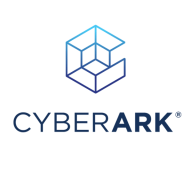

Find out in this report how the two Active Directory Management solutions compare in terms of features, pricing, service and support, easy of deployment, and ROI.
I have seen over 30% return on investment due to the improvement in operational efficiencies through automation, which enhances productivity.
We've seen a return on investment of more than 100% over the past two to three years.
The solution is really time-saving since I don't need to create users in each server or system manually, and user access control is streamlined.
They resolved the problem immediately after I reported it, on the same day, within one hour.
They respond immediately when requests are raised, and they are always available for priority one tickets.
I would rate technical support for CyberArk Identity a nine out of ten because they are professional, knowledgeable, and resolve queries efficiently when needed.
Support documents are available on the internet in every language.
Sometimes support takes long to engage and resolve, extending over weeks or even months.
We can use it on different phones and computers, demonstrating its scalability.
CyberArk Identity is scalable as needed, but increasing resources affects overall costs.
CyberArk Identity is definitely a scalable solution; it all depends on the money that you have, as with anything else.
Microsoft Active Directory scales effectively; I don't foresee any issues with that at all.
We no longer have our data infiltrated by unauthorized persons, and tracking actions within the system has become very easy.
When you have it in the cloud, you have CyberArk every time you need it.
With a stable network, due to the redundant data centers across the globe, it is a lot easier to use as a SaaS solution.
With multiple domain controllers, stability is ensured.
I've been working with Microsoft Active Directory for over 3 years, and we've had no problems.
Integration or deployment is extremely difficult for CyberArk Identity.
There's a need to enhance network performance.
For CyberArk Identity, you need knowledge of their scripting language to pull different sets of reports.
Exporting and verifying group memberships require command line scripts, which isn't simple.
There are some features that need improvements in terms of ease of use and frequency of updates.
Sometimes, it can be overly complicated, and when you apply Group Policy in an Active Directory environment, sometimes those settings apply and sometimes they don't.
Regarding pricing, it can be quite a lot for small companies.
The pricing is acceptable.
If I am not going fully cloud, there are additional resources I will need to purchase, such as spinning more VMs or acquiring an HSM device to encrypt the vault.
For the cloud solution in our region, the pricing of Microsoft Active Directory is very high.
I consider Microsoft Active Directory expensive because if you buy this thing bundled with the Windows Directory Server, you get five user licenses for about a thousand euros, or a little bit less than this.
The pricing, setup cost, and licensing with Microsoft Active Directory is straightforward; you just buy the server and then have to buy the user CALs.
It impacts zero trust security strategies. It prevents lateral movements in the organization.
CyberArk Identity is a great solution for overall security posture and privileged identity controls because it has a strong base in securing privileged access and managing identities within our environment.
It is the most powerful access management system.
One valuable feature is the centralized creation of IDs.
I can control all the devices in my domain by just changing the group policies in one place.
Having active deployment and well-configured systems helps me manage tasks and easily oversee thousands of users.
| Product | Market Share (%) |
|---|---|
| Microsoft Active Directory | 6.2% |
| CyberArk Identity | 2.9% |
| Other | 90.9% |


| Company Size | Count |
|---|---|
| Small Business | 19 |
| Midsize Enterprise | 4 |
| Large Enterprise | 9 |
| Company Size | Count |
|---|---|
| Small Business | 19 |
| Midsize Enterprise | 6 |
| Large Enterprise | 20 |
CyberArk Identity is a versatile identity management solution suitable for a wide range of enterprises. It is designed to enhance enterprise security and improve user experience. Its focus on security, compliance, and operational efficiency, combined with positive user feedback, makes it a strong contender in the identity management space.
CyberArk Identity offers a robust suite of features to manage user identities and access privileges. It focuses on securing access to resources across various environments, including cloud and on-premises applications. Its capabilities include single sign-on (SSO), multi-factor authentication (MFA), lifecycle management, and privileged access management. These features are engineered to streamline access control, enhance security, and ensure compliance with regulatory standards.
According to our user interviews, CyberArk Identity is praised for its reliability and user-friendly interface. IT professionals highlight the ease of integration with existing systems, while business executives appreciate the visibility it provides into access and identity management across the organization. Users also commend the responsive customer support, which is crucial for enterprise-level solutions.
IT Professionals found that CyberArk Identity's focus on multi-layered security significantly reduced the risk of data breaches and unauthorized access. With a centralized dashboard and automation features, you can streamline identity and access management tasks, saving time and reducing complexity. Finally, it helps meet various compliance requirements.
Active Directory stores information about objects on the network and makes this information easy for administrators and users to find and use. Active Directory uses a structured data store as the basis for a logical, hierarchical organization of directory information.
This data store, also known as the directory, contains information about Active Directory objects. These objects typically include shared resources such as servers, volumes, printers, and the network user and computer accounts.
Security is integrated with Active Directory through logon authentication and access control to objects in the directory. With a single network logon, administrators can manage directory data and organization throughout their network, and authorized network users can access resources anywhere on the network. Policy-based administration eases the management of even the most complex network.
We monitor all Active Directory Management reviews to prevent fraudulent reviews and keep review quality high. We do not post reviews by company employees or direct competitors. We validate each review for authenticity via cross-reference with LinkedIn, and personal follow-up with the reviewer when necessary.